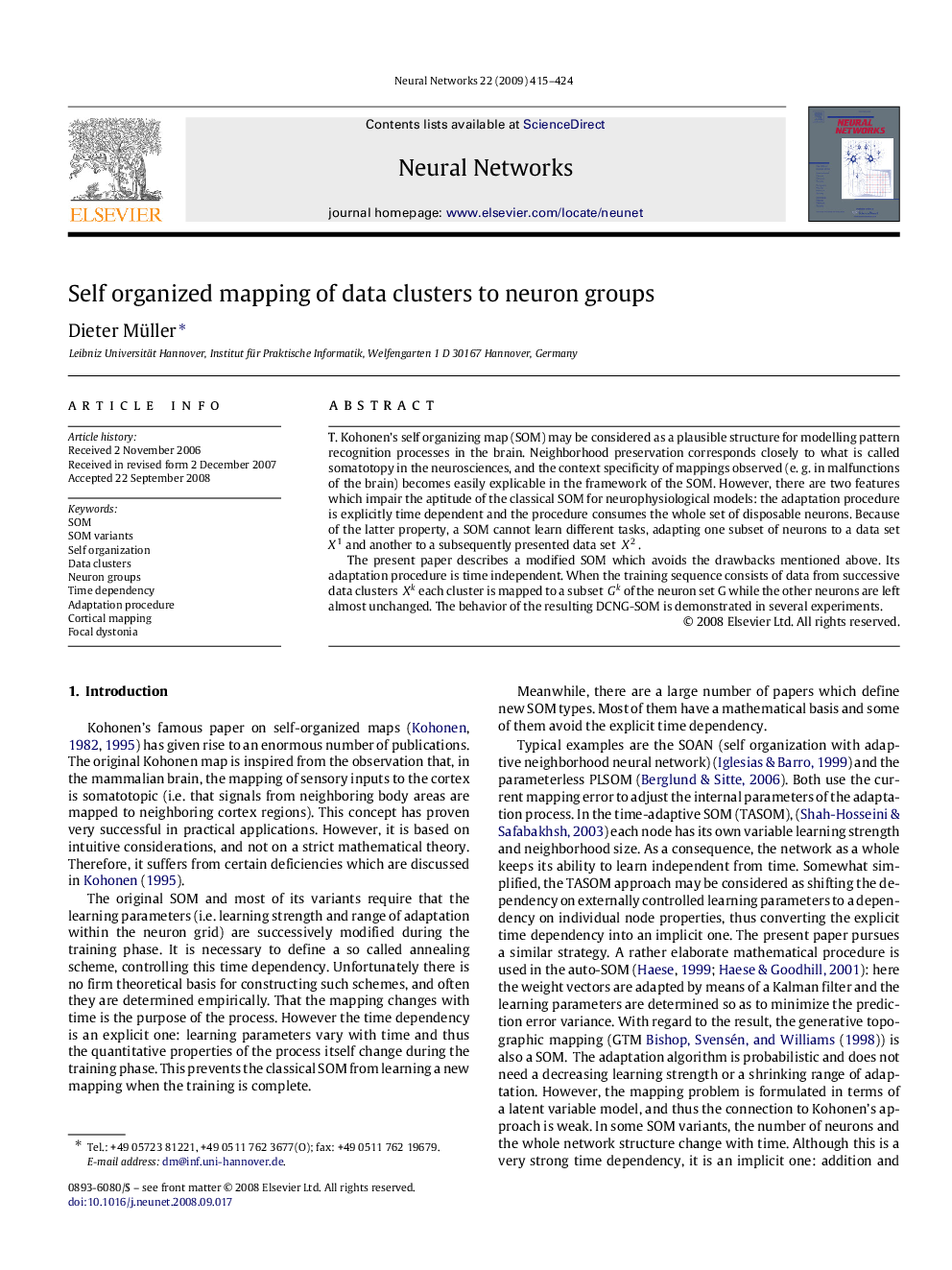| Article ID | Journal | Published Year | Pages | File Type |
|---|---|---|---|---|
| 404604 | Neural Networks | 2009 | 10 Pages |
T. Kohonen’s self organizing map (SOM) may be considered as a plausible structure for modelling pattern recognition processes in the brain. Neighborhood preservation corresponds closely to what is called somatotopy in the neurosciences, and the context specificity of mappings observed (e. g. in malfunctions of the brain) becomes easily explicable in the framework of the SOM. However, there are two features which impair the aptitude of the classical SOM for neurophysiological models: the adaptation procedure is explicitly time dependent and the procedure consumes the whole set of disposable neurons. Because of the latter property, a SOM cannot learn different tasks, adapting one subset of neurons to a data set X1 and another to a subsequently presented data set X2 .The present paper describes a modified SOM which avoids the drawbacks mentioned above. Its adaptation procedure is time independent. When the training sequence consists of data from successive data clusters Xk each cluster is mapped to a subset Gk of the neuron set G while the other neurons are left almost unchanged. The behavior of the resulting DCNG-SOM is demonstrated in several experiments.
